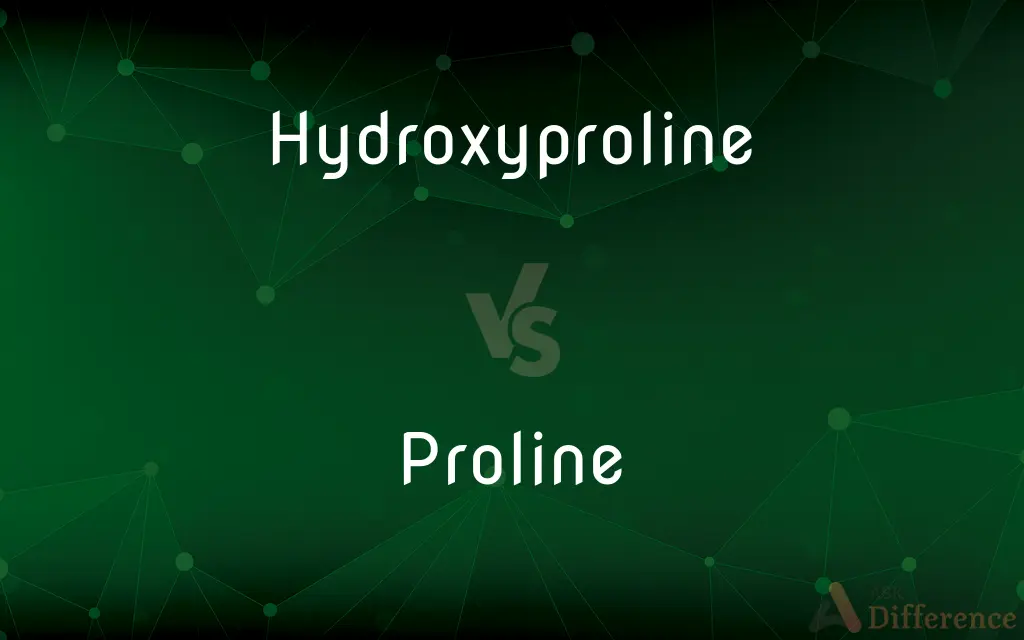Hydroxyproline vs. Proline — What's the Difference?

Difference Between Hydroxyproline and Proline
ADVERTISEMENT
Compare with Definitions
Hydroxyproline
(2S,4R)-4-Hydroxyproline, or L-hydroxyproline (C5H9O3N), is an amino acid, abbreviated as Hyp or O, e.g., in Protein Data Bank.
Proline
Proline (symbol Pro or P) is an organic acid classed as a proteinogenic amino acid (used in the biosynthesis of proteins), although it does not contain the amino group -NH2 but is rather a secondary amine. The secondary amine nitrogen is in the protonated NH2+ form under biological conditions, while the carboxy group is in the deprotonated −COO− form.
Hydroxyproline
(biochemistry) A hydroxy derivative of the amino acid proline found in the structural proteins of connective tissue
Proline
An amino acid, C5H9NO2, that is found in most proteins and is a major constituent of collagen.
Hydroxyproline
A crystalline amino acid (C5H9NO3), a hydroxylated proline, obtained by hydrolysis of gelatin or collagen. Chemically it is 4-hydroxy-L-proline. It is classified as nonessential for growth in rats.
ADVERTISEMENT
Proline
(amino acid) A nonessential amino acid C5H9NO2 found in most animal proteins, especially collagen; its cyclic structure leads to kinks in the peptide chain of proteins.
Hydroxyproline
A crystalline amino acid obtained from gelatin or collagen
Proline
An amino acid that is found in many proteins (especially collagen)
Share Your Discovery

Previous Comparison
Hunter vs. Prey
Next Comparison
Probability vs. Chance














































